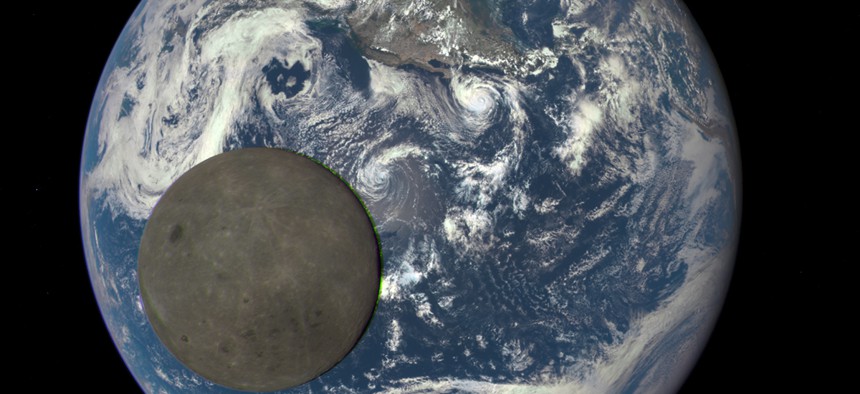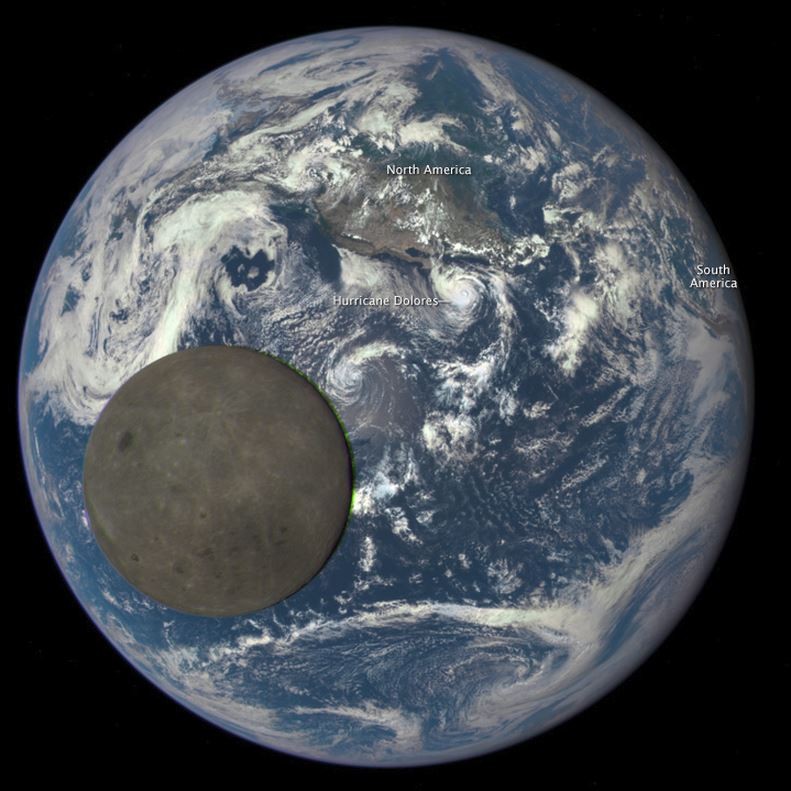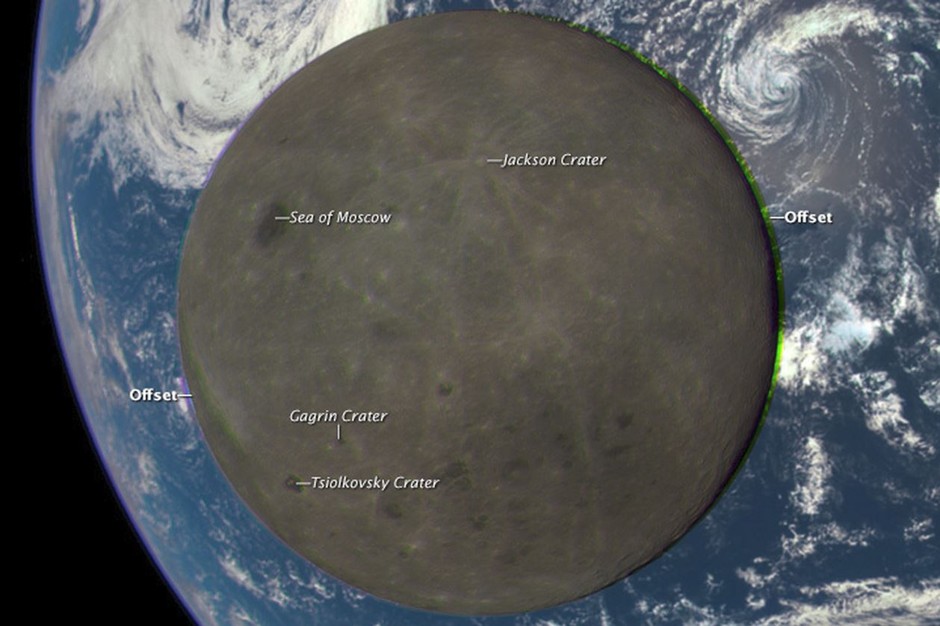
NASA/NOAA
A NASA Satellite Sees the 'Dark Side' of the Moon Crossing Earth
Watch the moon slide across Earth in this fantastic footage from 1 million miles away.
NOAA’s Deep Space Climate Observatory only reached its orbit a million miles from Earth in June. But already it’s sending back stunning test images, the latest being these shots of the moon’s dark side—that potential future home of a lunar city—sliding across our world.
The observatory, designed to monitor solar wind and forecast geomagnetic storms , is positioned in such a way it will only capture this event twice a year. This lunar traversing occurred over five hours in mid-July, writes NASA :
These images were taken between 3:50 p.m. and 8:45 p.m. EDT on July 16, showing the moon moving over the Pacific Ocean near North America. The North Pole is in the upper left corner of the image, reflecting the orbital tilt of Earth from the vantage point of the spacecraft.
The far side of the moon was not seen until 1959 when the Soviet Luna 3 spacecraft returned the first images. Since then, several NASA missions have imaged the lunar far side in great detail. The same side of the moon always faces an earthbound observer because the moon is tidally locked to Earth. That means its orbital period is the same as its rotation around its axis.
The images are stitched together from blue, red, and green channels, giving the right side of the moon a groovy, aquamarine fuzz. Look past the big, floating rock for a glimpse of Hurricane Dolores off the coast of Mexico :

And here’s a zoom of the normally hidden “dark side” of the moon. “The lunar far side lacks the large, dark, basaltic plains, or maria, that are so prominent on the Earth-facing side,” says the space agency . “The largest far side features are Mare Moscoviense (Sea of Moscow) in the upper left and Tsiolkovskiy crater in the lower left.”








